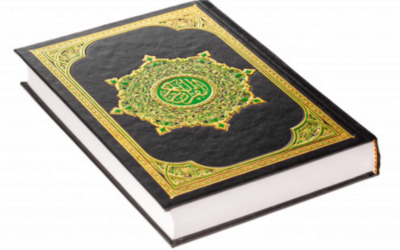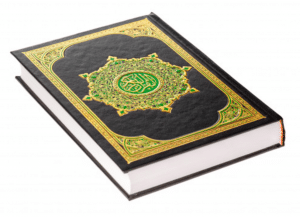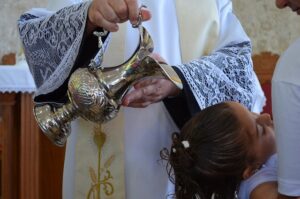- Toll Houses
- After death, demons attempt to take souls to Hades: “The teaching of Aerial Toll-Houses regards the soul’s journey after its departure from the body, and is related to the particular judgment. In its most general form, it refers to the idea that after death, the demons attempt to find a basis for taking the soul to Hades, while the angels and the prayers of the living defend the soul if it can be defended. Whether the soul is finally seized by the demons or taken to heaven depends on the state of the soul at death. In either case, the soul then experiences a foretaste of what it can expect after the final judgment. According to Fr. Thomas Hopko, the teaching of the Toll Houses is found in virtually every Father of the Church.” (http://orthodoxwiki.org/Aerial_Toll-House)
- Toll Houses are not Orthodox dogma: The “toll-houses” are the experience of the Christian soul immediately after death, as these experiences are described by the Fathers of the Church and Christian ascetics…The subject of the toll-houses is not specifically a topic of Orthodox Christian theology: it is not a dogma of the Church in the precise sense but comprises material of a moral and edifying character, one might say pedagogical…The hierarchs of this period themselves called these images of the judgement [sic] which follows immediately after death the “toll-houses.” The tables of the publicans, the collectors of taxes and duties, were evidently points for letting one go on the road further into the central part of the city. Of course, the word “toll-house” in itself does not indicate to us any particular religious significance. In patristic language it signifies that short period after death when the Christian soul must account for its moral state.” (http://orthodoxinfo.com/death/tollhouse_pomaz.aspx)
- Toll Houses’ existence cannot be established: “Actually, no one can dogmatically establish the existence of the toll-houses precisely in accordance with the form described in the dream (of Gregory recounted in the life) of Basil the New, insofar as no direct indication thereto is to be found in the Scriptures. However, this tradition has been preserved, with varying details, from profound antiquity and contains nothing that is contrary to piety.” (http://orthodoxinfo.com/death/tollhouse_debate.aspx)
- Tradition
- Tradition includes the Bible: “But to an Orthodox Christian, Tradition means something more concrete and specific than this. It means the books of the Bible; it means the Creed; it means the decrees of the Ecumenical Councils and the writings of the Fathers; it means the Canons, the Service Books, the Holy Icons – in fact, the whole system of doctrine, church government, worship, spirituality and art which Orthodoxy has articulated over the ages.” (Ware, Timothy (1993-04-29). The Orthodox Church (Kindle Locations 3060-3063). Penguin Books Ltd. Kindle Edition. p. 196)
- Tradition includes the Bible: “Note that the Bible forms a part of Tradition. Sometimes Tradition is defined as the oral teaching of Christ, not recorded in writing by His immediate disciples. Not only non-Orthodox but many Orthodox writers have adopted this way of speaking, treating Scripture and Tradition as two different things, two distinct sources of the Christian faith. But in reality, there is only one source, since Scripture exists within Tradition. To separate and contrast the two is to impoverish the idea of both alike.” (Ware, Timothy (1993-04-29). The Orthodox Church (Kindle Locations 3064-3068). Penguin Books Ltd. Kindle Edition. p. 196)
- The Orthodox Church has preserved tradition: “The Orthodox Church is distinguished from other Christian churches in that it has preserved unadulterated the first and most ancient ecclesiastical tradition and teaching, has avoided innovations and personal interpretations of the Holy Scriptures and dogmas of the faith…” (Ecumenical Patriarch Bartholomew, Archbishop of Constantinople, Encountering the Mystery: Understanding Orthodox Christianity Today, (The Doubleday Religious Publishing Group: New York), 2008, p. 31)
- Tradition lives in the Church: “Tradition is not only kept by the Church – it lives in the Church, it is the life of the Holy Spirit in the Church. The Orthodox conception of Tradition is not static but dynamic, not a dead acceptance of the past but a living discovery of the Holy Spirit in the present.” (Ware, Timothy (1993-04-29). The Orthodox Church (Kindle Locations 3091-3093). Penguin Books Ltd. Kindle Edition. 198)
- Tradition cannot change. It is truth: “Tradition is the living continuity with the past, the link we have with the Church of ancient days. Tradition cannot change, it is Truth! This is because Tradition is the faith and practice which Christ imparted to His apostles, and which has come down to us throughout twenty centuries.” (Grube, Fr. George (2012-08-19). The Orthodox Church A to Z (Kindle Locations 5974-5976). Light and Life Publishing, http://www.light-n-life.com. Kindle Edition.)
- Tradition links the church with the apostles: Since Truth cannot change and Tradition is Truth, it is evident that Tradition is of utmost importance in maintaining the golden link with the Church that comes to us from the apostles.” (Grube, Fr. George (2012-08-19). The Orthodox Church A to Z (Kindle Locations 5981-5982). Light and Life Publishing, http://www.light-n-life.com. Kindle Edition.)
- Trinity
- Trinity is three distinct persons: “God is not simply a single person confined within His own being, but a Trinity of three persons, Father, Son, and Holy Spirit, each of whom ‘dwells’ in the other two by virtue of a perpetual movement of love. God is not only a unity but a union.” (Ware, Timothy (1993-04-29). The Orthodox Church (Kindle Locations 3259-3260). Penguin Books Ltd. Kindle Edition. p. 209)
- Women
- Women can become deacons: “Orthodoxy certainly accepts that women can be ordained to the first of the Major Orders, the diaconate.” (Ware, Timothy (1993-04-29). The Orthodox Church (Kindle Locations 4545-4546). Penguin Books Ltd. Kindle Edition. p. 292)
- Women cannot become priests: “The ordination of women to the priesthood lacks all basis in Scripture and Tradition, and after two thousand years we have no right to innovate in a matter of such importance.” (Ware, Timothy (1993-04-29). The Orthodox Church (Kindle Locations 4555-4556). Penguin Books Ltd. Kindle Edition. p. 293)
- On the 40th day new mothers must appear in the church: On the fortieth day after giving birth, the Orthodox mother (and her child) must attend church so that the mother may be ceremoniously welcomed in her new role, and the child may be formally received as a candidate for Baptism in the Church.” (Grube, Fr. George (2012-08-19). The Orthodox Church A to Z (Kindle Locations 3802-3804). Light and Life Publishing, http://www.light-n-life.com. Kindle Edition.)
Has the Quran been preserved perfectly?
Muslims claim that the Quran was perfectly preserved, is without errors, contains scientific accuracies, and has no...






